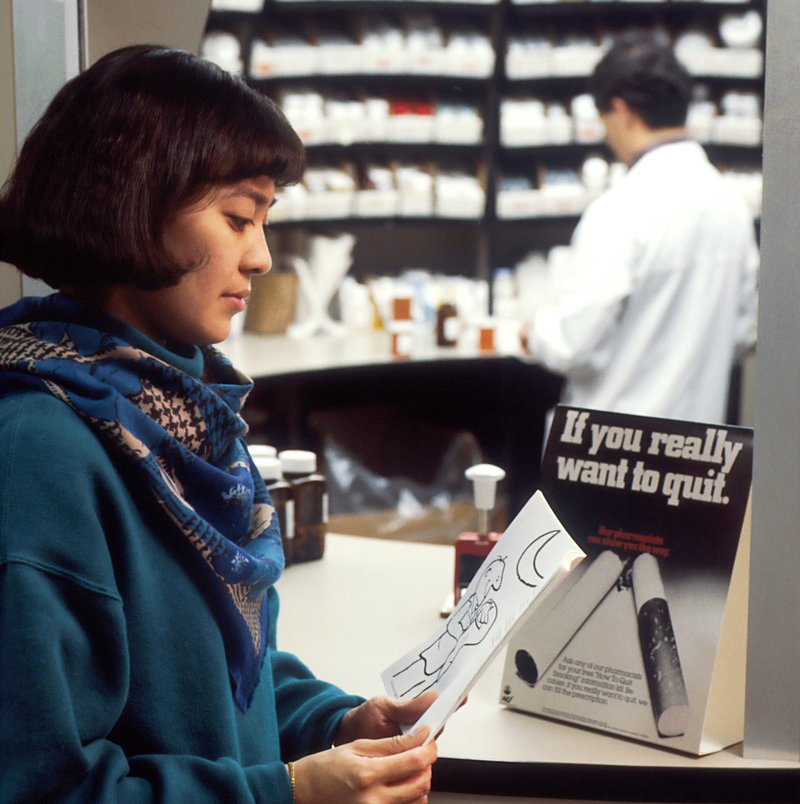-
0800 612 0011
free from landlines
-
0330 660 1166
free from most mobiles
Published at 16 March, 2023 14:22.

A recent UK survey has found that 60% of smokers want to quit, with 10% wanting to quit within the next three months.
One big factor contributing to this was Covid-19 resulting in over a million smokers quitting - but how exactly do you quit?
This form of therapy includes a range of quit-smoking products, from prescription nicotine in a nasal spray/inhaler, nicotine patches, gum/lozenges (which can be bought without a prescription), and stop-smoking drugs like bupropion/ varenicline.
Out of these products, short-acting nicotine replacement therapies include nicotine gum and lozenges, nasal spray, and inhalers. This short-term relief is used to keep short but intense cravings at bay.
Long-term nicotine replacement therapy involves using something long-term to prevent smoking altogether - they include nicotine patches or a non-nicotine, stop-smoking drug.
Think back to your average day or weekend, where do you smoke the most?
Often, urges are most likely to happen in places where tobacco was smoked or chewed the most, this includes at parties or bars (with social smoking being a big problem in those kinds of environments).
Smoking is also incorporated into some people's routines. For example, having coffee is associated with having a cigarette for some smokers.
Knowing these triggers will make a relapse less likely. For example, if you smoke whilst talking on the phone, try keeping a pen and paper nearby, allowing you to doodle instead of smoking.
Getting strong cravings? Try to wait 10 more minutes; each craving lasts between 3 and 5 minutes. After a few weeks - to a month, these cravings will eventually subside and become a lot easier to deal with and after an average of 6 months, your body won’t suffer from these cravings again.
During these 10 minutes, do something to distract yourself - this could include something simple such as drinking a glass of water if you’re in the house or going to a public smoke-free zone if you are out and about.
Treat yourself to a sweet treat or healthy snack - this will teach your mind to associate this positive reward with no smoking - this trick also works with gum.
Smoking can form a habit of having to hold something, instead of holding a cigarette could you hold a sweet treat or a pen instead?
Although you may think one cigarette may satisfy your tobacco craving, this can easily lead to another cigarette, after all, “another one won’t hurt” - creating another dangerous cycle and delaying your journey to quitting smoking.
Even if it's just for a short period, physical activities can distract you from tobacco cravings as well as improve your overall health.
“But what if I don’t have enough time?” look at incorporating these activities into times when you used to go out for a smoke; not smoking may save you more time than you might think.
We understand that going to the gym and working out for hours on end may not be your cup of tea, which is why physical activity can also come in the simple form of running up and down the stairs a few times or taking your dog out for a walk.
If a craving comes on whilst you’re at home or in the office, try squats, deep knee bends, pushups, running in one place or walking up and down a set of stairs.
If all of these activities are off the radar due to an injury or other circumstances, try another inactive activity such as sewing, woodwork, writing a journal or doing some housework.
Your body is going through withdrawal, not only from smoking but also from easy stress relief.
16% say that they started smoking or increased their smoking due to stress (Mental Health Foundation and YouGov).
But worry not, there are more effective ways to deal with stress, with some being able to be done anywhere at any time. These stress-busting methods include deep breathing, muscle relaxation, yoga, visualisation, a massage or listening to calming music.
Having a support system works wonders when you’re trying to quit smoking; ask a friend, a loved one or a member of a support group to help you resist tobacco cravings.
This support can come in the form of chatting on the phone, going for a walk, sharing a few laughs or meeting to talk and support each other.
Professional services are also available for you to call at any time for support and counselling.
Well done, if you are reading this article you are already following this step.
From reading helpful blogs, advice from past smokers and advisory boards for smokers - all these things can help you receive advice when you need it most or when your support system isn’t available to chat during a craving.
Motivational quotes, reasons why you quit and the positive effects of quitting smoking can help encourage you to keep going on your smoke-free journey. These things can be said out loud, written down or even represented through creative outlets such as paintings.
Some reasonings for quitting smoking can include:
Keep in mind that trying something to beat the urge to use tobacco is always better than doing nothing. And each time you resist a tobacco craving, you're one step closer to being tobacco-free.
Whatever your reason for quitting, the friendly team at Yorkshire Smokefree believe in you!
Through personalised services, the team will provide you with expert NHS advice and support. So when you're ready to quit, we're ready to help - why not contact us to start your journey today?